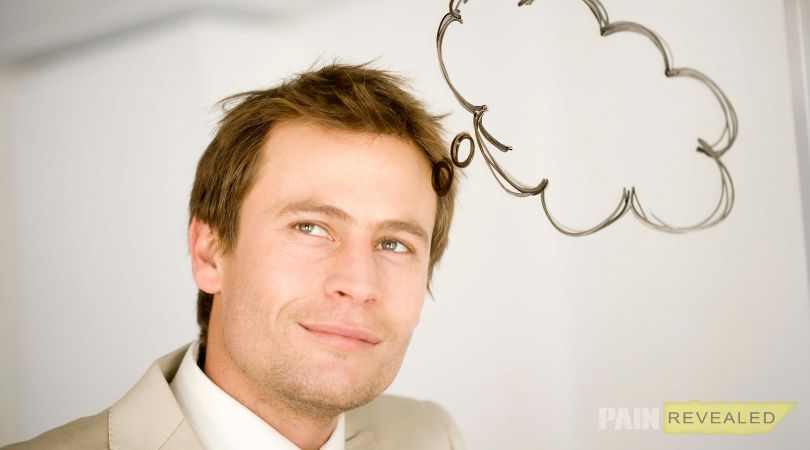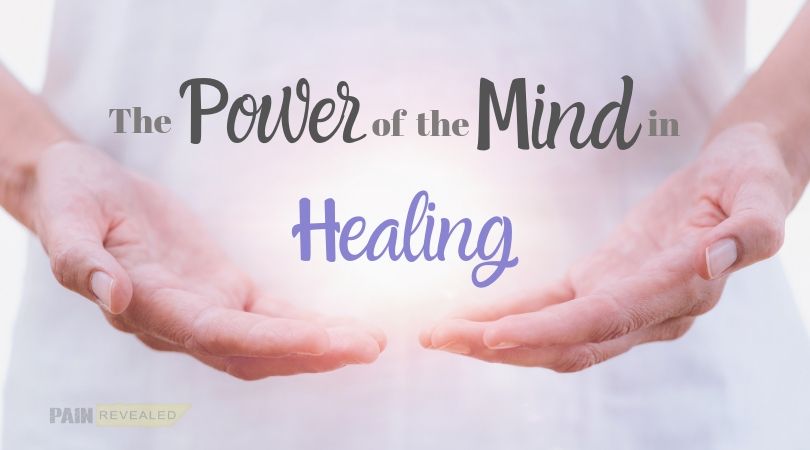“A joyful heart is good medicine, but a crushed spirit dries up the bones.” –Proverbs 17:22 (ESV)
Since ancient times, people have recognized the power of the mind to heal. It is within the grasp of each of us to use our minds and attitudes to promote our health and well-being.
In Episode 9 of the Pain Revealed Docuseries, we discussed the power of visualization with Dr. Edward Group.
Dr. Group explains that “meditation and visualization are incredible for the healing process.” He suggests that patients study the anatomy of an injured or painful area, and visualize this area healed in their mind using anatomical images. Prayer has a similar effect, and he believes that prayer is a form of meditation.
Prayer was also mentioned by Paul Winterton, M.D., an orthopedic surgeon we met in Episode 1 of Pain Revealed. He states that he participates in prayer groups for his hospitalized patients.
Dr. Winterton describes himself as driven by hard data and research in his treatment decisions. He discusses prayer as an efficacious treatment modality with a proven track record.
Pain Revealed expert Esti Bakty N.M.D. talked with us about the role of a positive mental attitude in Episode 8 of Pain Revealed. She asserts that mental attitude and positive outlook play a critical role in healing.
She comments, “If you believe that something is going to help you, it will help you.” Positive patients have better outcomes. She adds that “You have the ability mentally to control your body.” For this reason, she always recommends mind-body treatments for patients, such as meditation or psychotherapy.
Time and again, expert after expert, patient after patient, we heard the same advice: the mind is powerful, and a positive attitude is critical. The mental, psychological, and spiritual side of healing is inseparable from the process of healing, regardless of the modality you choose.
Probably the most important practical step that patients can take to cultivate this positive mindset is with the practice of visualization. This simple technique is accessible to all, and can be modified in a way that you are most comfortable with, whether that be prayer or meditation.

Take a tip from Dr. Group, mentioned above, and find an anatomical illustration of an area of your body that you want to heal. Study what that body part looks like when it is at optimum health, and pray or meditate with this image in mind. Picture your own body being as whole and healthy as the body depicted in the illustration.
Set aside time daily for prayer or meditation. Diffuse calming oils such as lavender, chamomile, or cedarwood to create a pleasant and stress-reducing environment.
Play gentle music or white noise to promote relaxation or block out distracting noises. This can be as simple as turning a fan on low. There are even free smartphone apps that offer choices for white noise!
While praying or meditating, breathe slowly and deeply. Purposely slowing your breathing will also slow down your heart and bring your mind and body to a more restful state.
Focus sequentially on the improvements you want in your body, visualize the treatments you are receiving as being effective and successful, and experience a sense of gratitude for healing. Affirm your body’s ability to heal itself, and thank it in advance for the work it will do and the success it will achieve.
If you are part of a faith community, ask others for prayer on your behalf. Ask about their concerns, and pray for them as well, knowing that the wider the community of prayer and the more give and take, the greater will be the results.

Journaling can also be an effective and simple tool to cultivate a positive mindset for healing. Write down positive expectations and positive steps you are thankful for each day.
When you experience improvements, note them in the journal, and include what you think was effective. Eventually, your journal will become a chronicle of healing that will encourage you in tough times and document how far you have come.
Ultimately, we are all responsible for our own healing, and must participate in our own wellness journey. That is the only way to get past the mindset of modern medicine that treats symptoms and covers pain and disease with medication instead of seeking true healing.
By engaging a positive mindset in your health journey, you are taking sure steps towards authentic wellness and healing.

